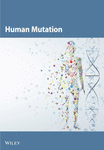PromoLign: A database for upstream region analysis and SNPs†
Communicated by Alastair Brown
Abstract
The study of transcriptional regulation at the genomic level has been hindered by the lack of functional annotation in the putative regulatory regions. Phylogenetic footprinting, in which cross-species sequence alignment among orthologous genes is applied to locate conserved sequence blocks, is an effective strategy to attack this problem. Single nucleotide polymorphisms (SNPs) in transcription factor (TF) binding sites contribute to the heterogeneity of TF binding sites and might disrupt or enhance their regulatory activity. The correlation of SNPs with the TF sites will not only help in functional evaluation of SNPs, but will also help in the study of transcription regulation by focusing attention on specific TF sites. PromoLign (http://polly.wustl.edu/promolign/main.html) is an online database application that presents SNPs and TF binding profiles in the context of human-mouse orthologous sequence alignment with a hyperlinked graphical interface. PromoLign could be applied to a variety of SNPs and transcription related studies, including association genetics, population genetics, and pharmacogenetics. Hum Mutat 23:534–539, 2004. © 2004 Wiley-Liss, Inc.




